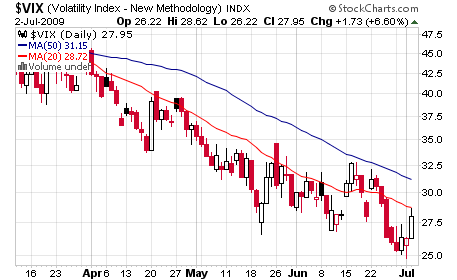In a short speech yesterday, Indonesian President Yudhoyono declared that threats to democracy would no longer be an issue for Indonesia, as evidenced by the relatively smooth election that took place in July: "Through this election the people have demonstrated that our democracy has achieved a point of no return." While his reelection is encouraging given the type of economic policies he will likely implement, it's important to keep in mind the typical troubles experienced by large, complex, developing democracies (i.e. India...see Newsweek's comparison here). Indonesia has a long way to go in terms of development and investors can take advantage of that. Infrastructure, education, and health care seem to be the next major challenges for Indonesia, which many investors are already positioned for via ETFs like IDX.
Chart courtesy of StockCharts.com
Just for comparison with the BRIC countries, here is a chart displaying GDP growth rates from 2005 to 2008 along with the projected growth rates through 2014. These projections are from the IMF.
Disclosure: No position



















